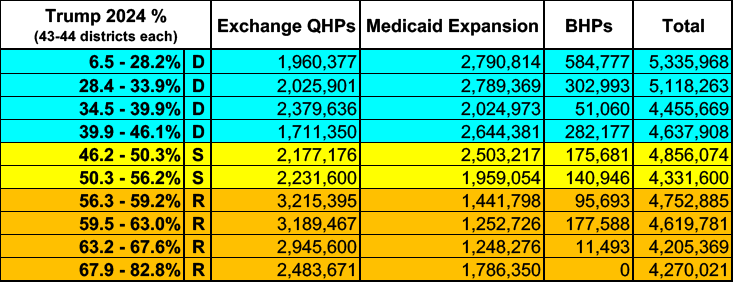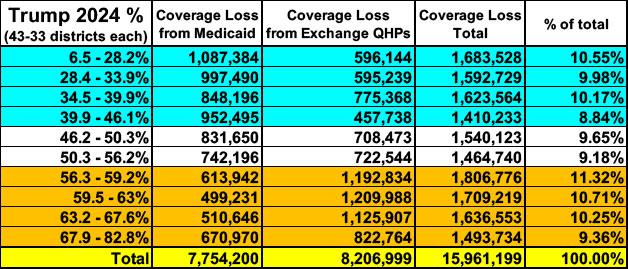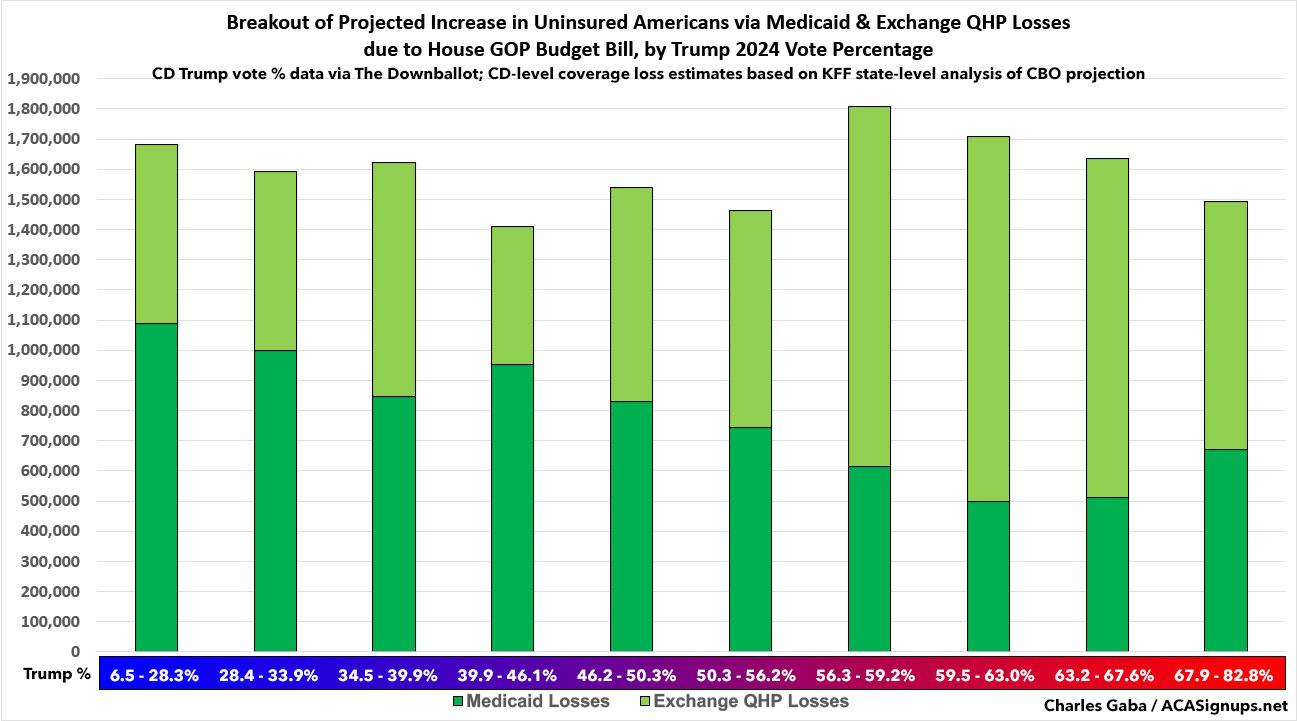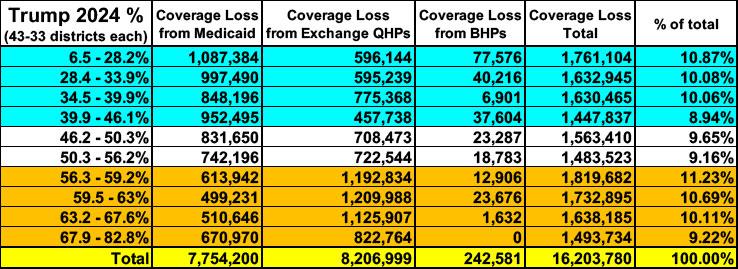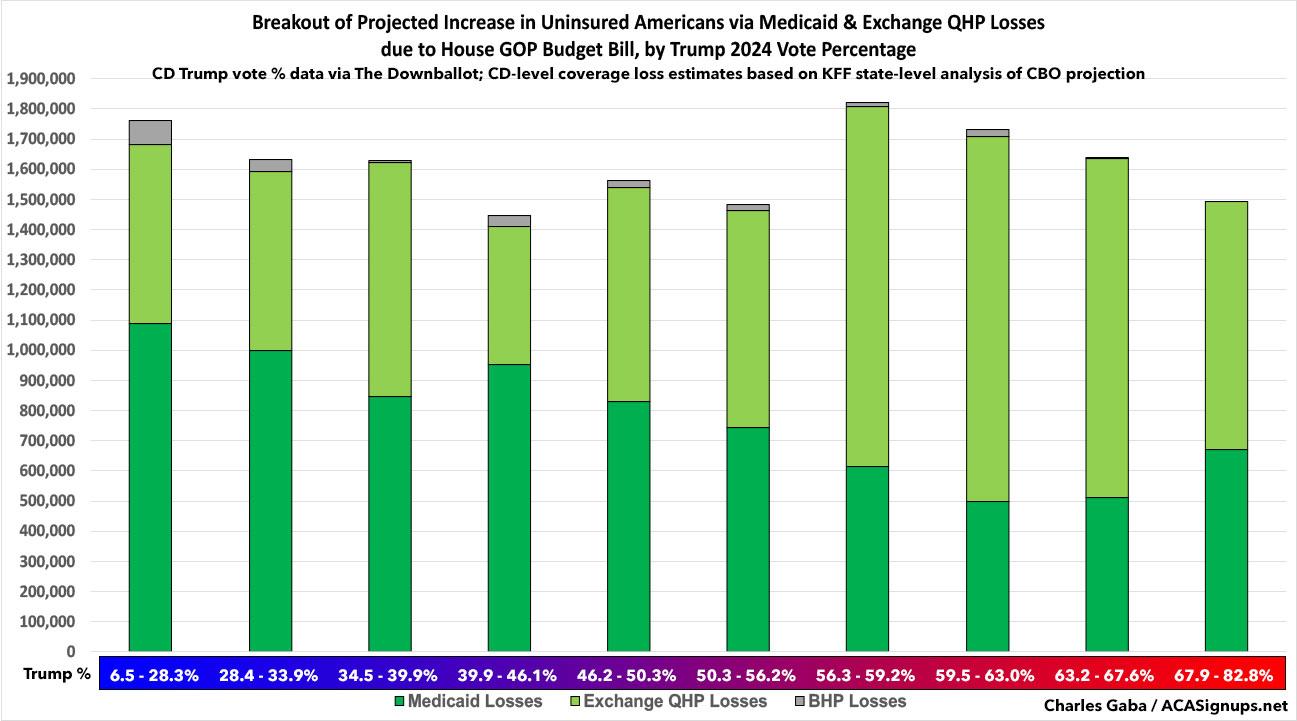Red v. Blue: Who'd be screwed most by the #MAGAMurderBill? (Revisited)
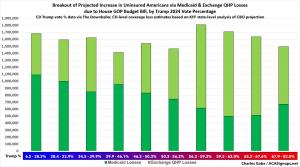
Last month, in response to House Republicans passing their version of the budget resolution bill, I broke out total enrollment in Medicaid via ACA expansion, ACA exchange Qualified Health Plan (QHP) enrollment and ACA-based Basic Health Plan (BHP) enrollment by Congressional District in order to try and get a sense of just how many Americans healthcare coverage is at risk from the bill...and how that breaks out along partisan lines at the House District level.
As I noted at the time, Republicans seem to be under the impression that it will mostly be Democrats who get screwed by their bill, since 9 of the 10 non-expansion states are Republican strongholds...while some Democrats seem to be under the impression that it will mostly be rural MAGA republicans who get screwed.
I further noted that while most of the attention has been on the ~20 million people enrolled in Medicaid via ACA expansion, there are actually more people (~24 million) enrolled in ACA exchange plans, which are also in deep trouble from both the bill itself as well as the GOP allowing the enhanced IRA subsidies to expire, as well as the Trump Administration's so-called "Integrity Rule" which would cause further damage to ACA exchange enrollees once implemented.
In addition, there's around 1.8 million people in New York, Minnesota and Oregon enrolled in Basic Health Plan coverage which will also be indirectly negatively impacted by all of the above.
Using my updated CD-level estimates of enrollment in Exchange QHPs, BHPs and Medicaid Expansion, I separated all 436 House districts (don't forget DC!) by Red (Republican) and Blue (Democratic) winners...and concluded that there are more Medicaid expansion and BHP enrollees in blue districts...but more exchange QHP enrollees in red districts:
Overall, there's about 11% more enrolled in districts won by a Democrat than a Republican, but that's small comfort to the 22 million in the latter.
I then broke out all 436 districts into 10 groups along the partisan spectrum based on Trump's 2024 vote percent...and found pretty much the same thing:
However, this just tells me how many people are enrolled in these programs. What about how many would actually lose coverage?
This morning, Jonathan Cohn of The Bulwark posted a piece asking whether Republicans understand whose healthcare they're working so hard to eliminate:
But it’s not just the voting public failing to grasp fully what this legislation would do. Some Republican lawmakers might be missing a few things, too, starting with the fact that Medicaid cuts would hit hard in their own backyards.
Taking hundreds of billions of dollars out of the program would inevitably reduce hospital revenue. And the hospitals least able to absorb that sort of hit are rural hospitals, because so many have come to rely on Medicaid to offset the financial challenges of operating in sparsely populated areas.
In April, the left-leaning Center for American Progress released a report predicting 190 rural hospitals could close because of Medicaid cuts Republicans proposed. It was the first of many such warnings, including a report Democrats recently commissioned from the Sheps Center for Health Services Research.
...It’s not just the legislation’s Medicaid cuts that could give Republicans political problems they may not yet fully perceive.
Both the House bill and emerging Senate version would make significant cuts to the Affordable Care Act by changing the rules for how people sign up for plans on HealthCare.gov and its state counterparts—and then, by changing the financial arrangements that the federal government uses to subsidize coverage.
Like the Medicaid cuts, these changes all sound very technical. But they would have significant consequences, especially if Republicans also allow a temporary boost in insurance subsidies to lapse as planned at the end of the year.
That’d be a double whammy for most of the 24 million people buying Obamacare coverage. And it turns out that 45 percent of them identify as Republicans, while just 35 percent identify as Democrats, according to a separate KFF poll. Of the Republicans, more than two-thirds identify as “MAGA Republicans.”
Cohn actually cites my May analysis in his footnotes...but again, that was about the total number of enrollees in these programs, not how many of them would lose coverage.
Nationally, the Congressional Budget Office projects that the grand total would be around 16.0 million people, give or take, broken out roughly 8.2 million ACA exchange enrollees and 7.8 million Medicaid enrollees. This would be roughly 33% of total exchange enrollment and around 40% of Medicaid expansion enrollees, although the actual numbers get more complicated than that.
Based on the CBO projection, KFF recently published an analysis which breaks those 16 million out at the state level. Again, it's not a simple matter of lopping off 1/3 of exchange enrollees and 2/5 of all Medicaid expansion enrollees; specifics in the legislative text as well as the differing funding mechanisms in each state plus some other factors mean that the actual percentage of those who are expected to lose healthcare coverage ranges widely by state:
- Between 21% - 77% of Medicaid expansion enrollees
- Between 7% - 47% of ACA exchange enrollees
I'm also not sure whether or not the KFF analysis is counting any BHP enrollees losing coverage as part of the 16.0 million total, or if they're not accounted for. This is important because while BHP enrollment is nominal in Oregon (around 32,000) and only modest in Minnesota (~97,000), it's huge in New York (1.66 million people...or 7.5x as many as total QHP enrollees).
Furthermore, according to a recent New York Health Dept. analysis, they expect around 240,000 of their BHP enrollees to lose coverage if the House GOP version of the bill is implemented...which is more than the total number of exchange QHP enrollees this year (221,000). If the NY Health Dept. analysis is accurate and is representative in MN & OR as well, it suggests perhaps 14,000 more losing coverage in Minnesota and 4,600 more losing coverage in Oregon.
Since I'm not sure whether the KFF analysis includes those or not, I'm running the CD-level breakout both ways: One based on 16.0 million losing coverage nationally, one based on 16.2 million. I'll update and/or remove one of these as soon as I confirm how the KFF breakout was done.
If I go with a simple red/blue district breakout, it's pretty much a wash, with ever-so-slightly more of those losing coverage living in red districts:
If I assume the BHP losses weren't included by KFF and add them on top, the balance tips over to the blue districts...but again, just by a smidge. It's still basically 50/50 either way:
OK, but what if I break out all 436 districts into the 10 blue-to-red spectrum brackets?
Here's what it looks like assuming KFF already accounted for BHP losses:
When broken out this way, it definitely skews more towards the redder districts...but it's not exactly a massive shift. Here's what this looks like visually:
Finally, here's what it looks like if I assume the BHP losses weren't included in the KFF analysis...which, again, shifts things ever so slightly back towards the blue districts, but not by much:
The skyrocketing ACA exchange premiums will hit more red district residents starting in January 2026...while the Medicaid expansion's Job Loss Penalty (as Data for Progress puts it) wouldn't kick in until a year later, but would hit more blue district residents.
So, there you have it: No matter how you slice it, assuming the House Republican budget bill is passed, signed & implemented and Congress doesn't extend the IRA subsidies beyond the end of 2025, tens of millions of Americans in BOTH red and blue districts & states are going to be utterly screwed in the near future, and millions of them will lose healthcare coverage completely.
It's also vitally important to note that even if the CBO's ~16M projection is accurate, the remaining ~30 million enrolled in ACA exchange plans, Medicaid expansion and/or BHP plans who DON'T actually lose their healthcare coverage completely will STILL be screwed due to either MASSIVE premium hikes, Kafkaesque paperwork which up to 20% of Medicaid expansion enrollees would be literally unable to comply with or a combination of both.




